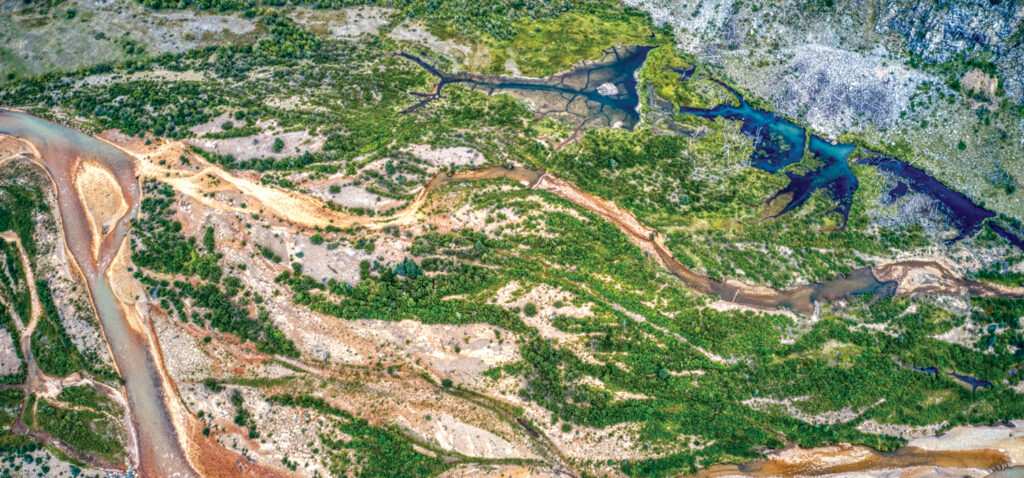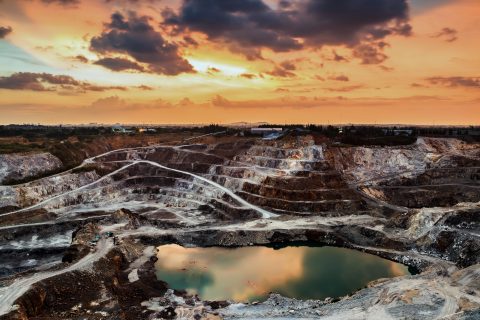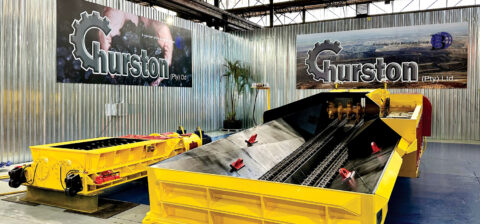SA Mining
Sustainability From Start To Finish
In an increasingly climate-conscious world, industries that have a negative impact on the environment are facing greater levels of scrutiny from end-users. For the modern mine, this means focusing on sustainability from the initial mining plan, to the after-mine rehabilitation.
According to Cathy Nader, principal: Mining and Resources at Nedbank Corporate Investment Bank, a focus on sustainability and environmental awareness is no longer just a nice-to-have, but is in fact essential. The trick is to take sustainability to a new level, while not impacting profitability.
“It should be remembered that virtually any focus on sustainability will help to reduce costs, thereby boosting profitability. Furthermore, a sincere focus on sustainability will be attractive to banks and other investors, potentially leading to the mine accessing cheaper funding,” she says.
“On the other hand, an insufficient focus on environmental, social and governance (ESG) goals will affect access to debt funding from banks, make investors more wary and maybe even impact access to mining licences.”
She says a failure to focus on remediation and rehabilitation from the outset can also lead to massive and unexpected costs when it comes time for mine closure. A lack of ESG focus can also lead to potential community and labour disruptions.
“This is why companies should implement sustainability practices into the mine plan from day one. For example, utilising renewable energy and practising good water management from day one allows the mine to optimise efficiencies, leverage new technologies, and really get its ESG principles in tune with its operations.”
ESG-linked funding
Natasha Pather, partner at Webber Wentzel, notes that a holistic approach to ESG-linked funding can unlock additional funding benefits for businesses.
“In the SA market, there are usually two types of ESG-linked funding made available to corporate borrowers – sustainable financing and use of proceeds financing, sometimes known as green or social loans,” she explains.
“Sustainable financing is a type of funding that allows borrowers to measure their performance against a set of predetermined key performance indicators. If these are met, there is a financial benefit, such as a margin reduction or access to additional funding. This financing is typically a better fit for larger corporates, which already have their own corporate social responsibility programmes.”
Use of proceeds financing, continues Pather, focuses on the purpose against which the proceeds are applied. This funding arrangement can be either a loan or a security, such as bonds, notes or other commercial paper.
“This type of funding is appropriate where it is possible to link the purpose to which the funding will be applied to an ESG-linked cause. A benefit of this type of funding is that it can be more accessible for a broader range of borrowers or issuers, who are looking to fund an ESG-linked purpose,” she says.
Sustainability and power
From a sustainable power perspective, it must be understood that the shift to greener energy sources comes with substantial financial investment. Fortunately, suggests Johan Pretorius, MMM segment lead: Anglophone Africa at Schneider Electric, there are also attainable financing models which allow mines, particularly junior miners, to realise their green projects.
“Foremost are partnerships with independent power producers (IPPs) and energy companies, which offer flexible financing and infrastructure development options. One example is power purchase agreements (PPAs), where mines partner with renewable energy companies to secure long-term, stable energy supply contracts,” he says.
“Under a PPA, the renewable energy company finances, builds, and operates the renewable infrastructure – such as solar or wind farms – and the mine agrees to purchase the generated power at a predetermined rate over a fixed period.”
This model, says Pretorius, is particularly advantageous for mines that want to reduce upfront capital expenditure, while ensuring a reliable and clean energy source.
“Another option is build-own-operate (BOO) models, preferred by larger, financially secure mining groups. These offer greater control over energy production, reducing reliance on external power sources and minimising long-term operational costs.”
BOO models are for more established clients, he notes, who want to have more say over how their energy mix is being used. For junior miners, on the other hand, there is growing interest from development finance institutions (DFIs) and international organisations in funding green energy projects in Africa’s mining sector.
“Ultimately, reliability of power is the key issue in most of Africa, so increasing green investments here not only help to improve ESG standards, but it should also uplift the surrounding communities, as it will enable the mine to create a sustainable ecosystem around it,” he says.
Post-mine sustainability
According to Pooja Dela, partner at Webber Wentzel, it is imperative that mines ask the question: What does sustainable development mean for the communities we leave behind?
“The global shift towards embedding business and human rights (BHR) principles in corporate decision-making has reshaped expectations of the mining industry. Companies are now seen not only as extractors of resources, but also as custodians of community wellbeing and as influencers of good practice in their supply chains,” she says.
“For mining companies to effectively future-proof their legacies, sustainable development requires a shift towards genuine, transparent, meaningful and continuous engagement with communities, throughout the mining lifecycle.”
Companies must always listen to community voices, she says, ensuring their needs and priorities shape the development agenda. This includes moving away from one-size-fits-all solutions, and tailoring projects to the unique cultural, heritage, environmental, economic, and social contexts of each community.
“Mines must invest in initiatives that promote economic diversification, such as supporting agriculture, entrepreneurship, or manufacturing. These investments foster resilience, and are a catalyst to creating sustainable livelihoods and development beyond the life-of-mine. Clearly, these should be considered upfront.
“Social and labour plans often include training and education components. However, the scope should expand to include skills development and skills transfer, to prepare communities for a post-mining economy. Collaborating with academic institutions and NGOs can enhance the quality and relevance of these programmes.”
While mining operations often bring significant infrastructure investments, such as roads, schools, and clinics, continues Dela, ensuring the long-term sustainability of these assets requires proper planning and handover processes, including partnerships with local governments.
The environmental impact of mining can persist for decades. Companies must prioritise rigorous rehabilitation programmes that create opportunities for sustainable post-closure land uses and economic transition. This, she says, could include ecological tourism, agriculture, or renewable energy projects, in line with regional spatial development priorities.
“In South Africa, the legacy of mining is inextricably tied to the country’s socio-economic development. As the sector navigates these changing dynamics, it must embrace a forward-looking approach that prioritises long-term community well-being and resilience. This means thinking not just about the present, but also about the generations to come, as the construct of sustainable development envisages.
“The communities we leave behind are not just a reflection of the mining industry’s commitment to transformation, they are a testament to its humanity. By embracing their role as partners in development, mining organisations have an opportunity to redefine their legacy – not as extractors of resources, but rather as builders of resilient, thriving communities,” says Dela.





